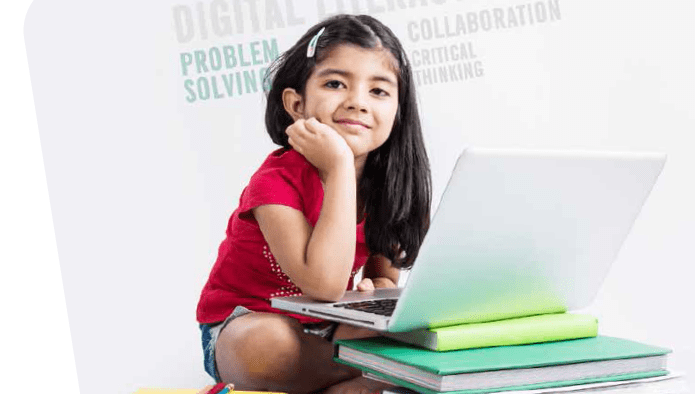It is evident that we cannot teach the students of today the way we were taught in the 20th century. Times have changed, technology has impacted us to a substantial extent and there is no dearth of knowledge and information in the age of Google. The term ‘21st-century skills’ refers to certain core competencies such as collaboration, digital literacy, critical thinking and problem solving, which advocates that students should be taught to help them thrive in today’s world. Let’s understand what distinguishes 21st-century teaching–learning from that of the past century.
Student-centered learning
It is true that one child, one teacher, one book and one pen can change the world. In the 21st-century classrooms, students play an active role in learning and teachers serve as mere guides. They are more of facilitators of learning than lecturers. They help students think critically and learn by doing, and act as a resource while their students discover and master new concepts.
This method of teaching–learning ensures the following:
- Personal responsibility
- Propagation of self-learning strategies
- Motivation to succeed
Student-centric learning ensures that students are engaged and interested. It presents students with many opportunities to think critically, construct knowledge actively, and extend what they have learned.
Technology and 21st-century skills
Different technological devices are readily available in modern classrooms. They are not only essential for today’s students to conduct online research and master necessary technology skills, but also give teachers the opportunity to add content to their lessons. Technology will never replace great teachers, but technology in the hands of great teachers can be transformational.
Active learning
In modern classrooms, students are actively engaged in what they learn. They participate more in active learning by working in groups or on computers, and complete projects and activities that help them discover new skills. Students can learn actively by talking and listening, writing, reading and reflecting. We must keep to active learning and researching, and be passionate about new ways and methods of doing things to be and remain relevant.
Personalised learning
The modern approach of personalised learning gives students the freedom to learn at their own pace and in the way they are most comfortable with. Artificial intelligence-powered adaptive learning can help teachers motivate students for a more outcome-based learning.
Project-based learning
Project-based learning is the primary gateway through which the aforementioned hallmarks are realised. There are consistent characteristics that make a project viable. Some of them are:
- Hands-on experience
- Collaborative efforts
- Multi-disciplinary approach
- Facilitation of student-centred instruction
- Relevance to real-world scenarios
- Flexibility to encourage experimentation
Project-based learning provides a plethora of opportunities for students and teachers to be engaged in ways best suited to their learning styles. It allows students to have an authentic learning experience that also has a significant impact on their personal lives.
Community partnerships
Community partners are the heart of 21st-century teaching and learning. Having real-world professionals and others in the community work with our students to help address real-world problems present powerful opportunities for students to get involved and engaged as citizens and leaders while achieving and retaining, curricular and standards-based proficiencies. Community partners also provide models for good citizenship/leadership and opportunities such as class trips, which are fun and demonstrate real-world learning skills.
Performance-based assessments
‘The secret of change is to focus all of your energy, not on fighting the old, but on building the new,’ said Socrates. Regular performance-based assessments are carried out by teachers through methods that are not restricted to tests, for example, by conducting quizzes and polls. Teachers can utilise projects as well as other products and performances as assessments to determine students’ achievements and needs. Also, the assessments are tailored to the abilities and needs of the students.
Collaborative learning
Learning through collaboration is one of the most effective forms of learning. Teaching and learning in isolation are very restrictive and hinder progress. Learning in groups enhances the scope of learning and develops critical thinking. Collaborative learning activities include collaborative writing, group projects, joint problem solving, debates and more. Collaborative learning redefines the traditional student–teacher relationship in the classroom.
Critical thinking
Critical thinking refers to the ability to analyse information objectively and make a reasoned judgment. Critical thinking involves the evaluation of sources such as data, facts, observable phenomena and research findings. Good critical thinkers can draw reasonable conclusions from a set of information, and discriminate between useful and less useful details to solve a problem or make a decision.
Thinking critically is more than just thinking clearly or rationally; it’s also thinking independently. It involves formulating your own opinions and drawing your conclusions regardless of outside influence. It’s about the discipline of analysis and seeing connections between ideas, and being open to other viewpoints and opinions.
Problem solving
Problem-solving skills help determine the source of a problem and find effective solutions. Although problem solving is often identified as a separate skill, there are other related skills that contribute to this ability.
Some key problem-solving skills include:
- Active listening
- Analysis
- Research
- Creativity
- Communication
- Dependability
- Decision making
- Team building
Creativity and innovation
Students demonstrate creative thinking, construct knowledge, and develop innovative products and processes using technology. Students apply existing knowledge to generate new ideas, products or processes, create original works as a means of personal or group expression, use models and simulations to explore complex systems, and identify trends and forecast possibilities.
Therefore, with the appropriate know-how and adequate tech support, diverse communities across the country can effectively launch and implement 21stcentury schools. But it can’t be done by piecemeal measures. Rather, it requires everything – from conceptualisation, effective infrastructure, a student culture of ‘trust, respect, and responsibility’, a collaborative learning environment and systematic professional development of teachers – to come together in order to ensure the best teaching–learning experience available today.



No Comment